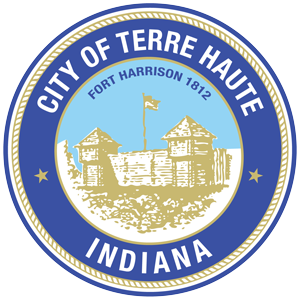The pyramid located in Section 1 of Highland Lawn Cemetery was constructed for Anna M. White for her future interment. It is of a much smaller scale version of those seen still today in Egypt and was designed for single interment. The structure contains information about Ms. White’s interests and family genealogy.hereDescription hereDescription hereDescription hereDescription hereDescription hereDescription hereDescription hereDescription herev
Local Notables
Eugene V. Debs was born on November 5, 1855 in Terre Haute. At the age of fourteen, Debs quit high school and was employed as a painter in the railroad yards. His labor union activities began when he was nineteen with the Brotherhood of Locomotive Firemen. Nineteen years later, he organized the first industrial union, the American Railway Union. In 1879, he was elected City Clerk and served two terms. In 1885, he was elected to a term in the Indiana General Assembly. He was so disgusted with his experience in the legislature, however, that he resolved to devote his time to the cause of organized labor. He ran five times for the President of the United States on the Socialist ticket. Those years were 1900, 1904, 1908, 1912 and 1920. The last time he ran was while he was serving a sentence in an Atlanta prison. He had been sentenced for making an anti-war speech at Canton, Ohio on June 16, 1918 against the United States participation in World War I. He received one million votes in the 1920 election. The man who defeated him, Warren G. Harding, released him from prison on Christmas Day, 1921. The last four years of his life were devoted to the reform of prisons. He died on October 20, 1926 in Chicago, Illinois. Congress later adopted many reforms that he advocated, such as the eight hour work day, pension plans, and workman’s compensation. His home at 451 North Eighth Street is maintained as a state and national historic site by the Eugene V. Debs Foundation, and also a National Registered Landmark of the National Parks System of the Interior Department of the United States.
In 1906, at the age of twenty-three, Dr. Ralph Noble Tirey became the youngest superintendent in the annals of Indiana school history. On April 27, 1934, he became the fifth president of the Indiana State Teacher’s College (predecessor of Indiana State University). Dr. Tirey received his B.A. (Bachelor of Arts), M.A. (Master of Arts), and L.L.D. (Doctor of Law) degrees from Indiana University where he was pitcher on the baseball team. Dr. Tirey co-authored such books as Pioneers, New Friends, New Paths, Trails Beyond, Teacher and a Better World, and Life Use Speller. He died in August of 1964 at the age of eighty-one.
Ruth Tirey’s professional career spanned twenty-one years. Her outstanding Anderson High School Choir attracted national attention and distinction in a series of performances. Her choir sang at the Music Educator’s Conference in three states and in 1938 her choir presented three concerts in Washington, D.C., which included performing for Mrs. Franklin D. Roosevelt and her guests in the Blue room at the White House. A third concert was presented in Washington Chapel in Washington, D.C. Mrs. Tirey died in April of 1977 at the age of seventy-two.
Eugene V. Debs was born on November 5, 1855 in Terre Haute. At the age of fourteen, Debs quit high school and was employed as a painter in the railroad yards. His labor union activities began when he was nineteen with the Brotherhood of Locomotive Firemen. Nineteen years later, he organized the first industrial union, the American Railway Union. In 1879, he was elected City Clerk and served two terms. In 1885, he was elected to a term in the Indiana General Assembly. He was so disgusted with his experience in the legislature, however, that he resolved to devote his time to the cause of organized labor. He ran five times for the President of the United States on the Socialist ticket. Those years were 1900, 1904, 1908, 1912 and 1920. The last time he ran was while he was serving a sentence in an Atlanta prison. He had been sentenced for making an anti-war speech at Canton, Ohio on June 16, 1918 against the United States participation in World War I. He received one million votes in the 1920 election. The man who defeated him, Warren G. Harding, released him from prison on Christmas Day, 1921. The last four years of his life were devoted to the reform of prisons. He died on October 20, 1926 in Chicago, Illinois. Congress later adopted many reforms that he advocated, such as the eight hour work day, pension plans, and workman’s compensation. His home at 451 North Eighth Street is maintained as a state and national historic site by the Eugene V. Debs Foundation, and also a National Registered Landmark of the National Parks System of the Interior Department of the United States.
The first person buried in Highland Lawn Cemetery was Samantha McPherson. Samantha was thirty years old when she contracted typhoid fever. She was buried on October 29, 1884.
